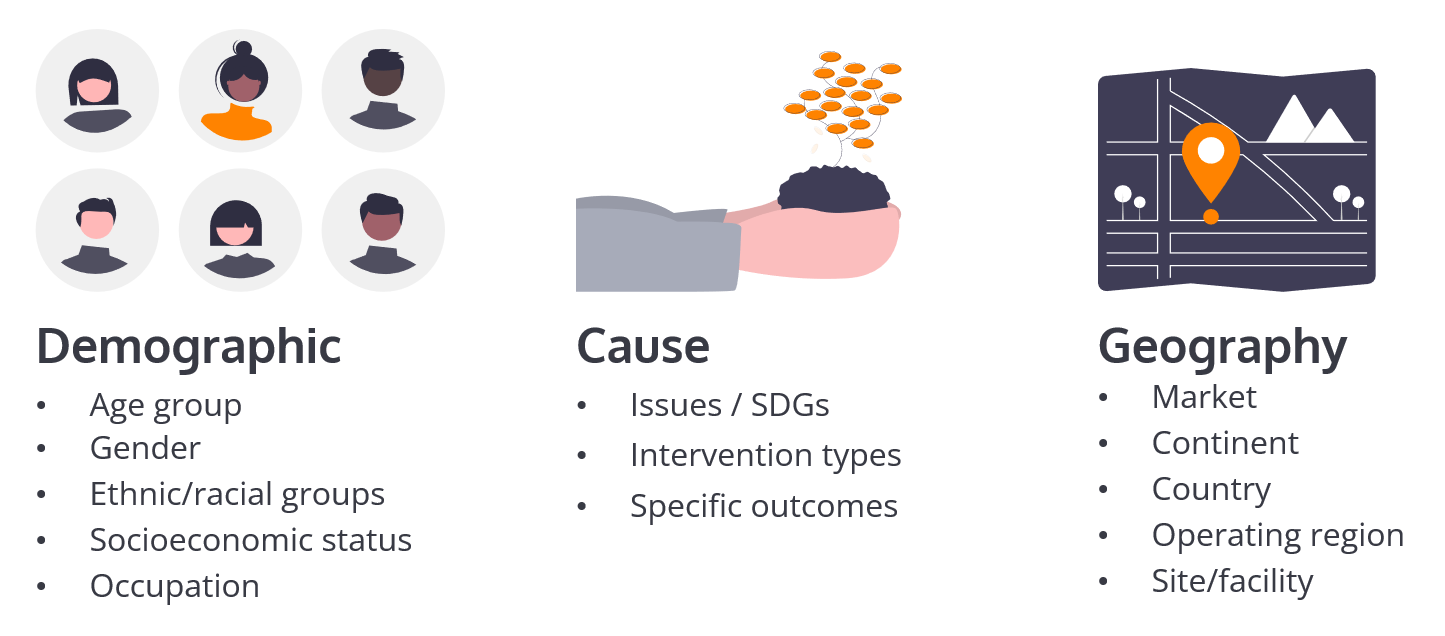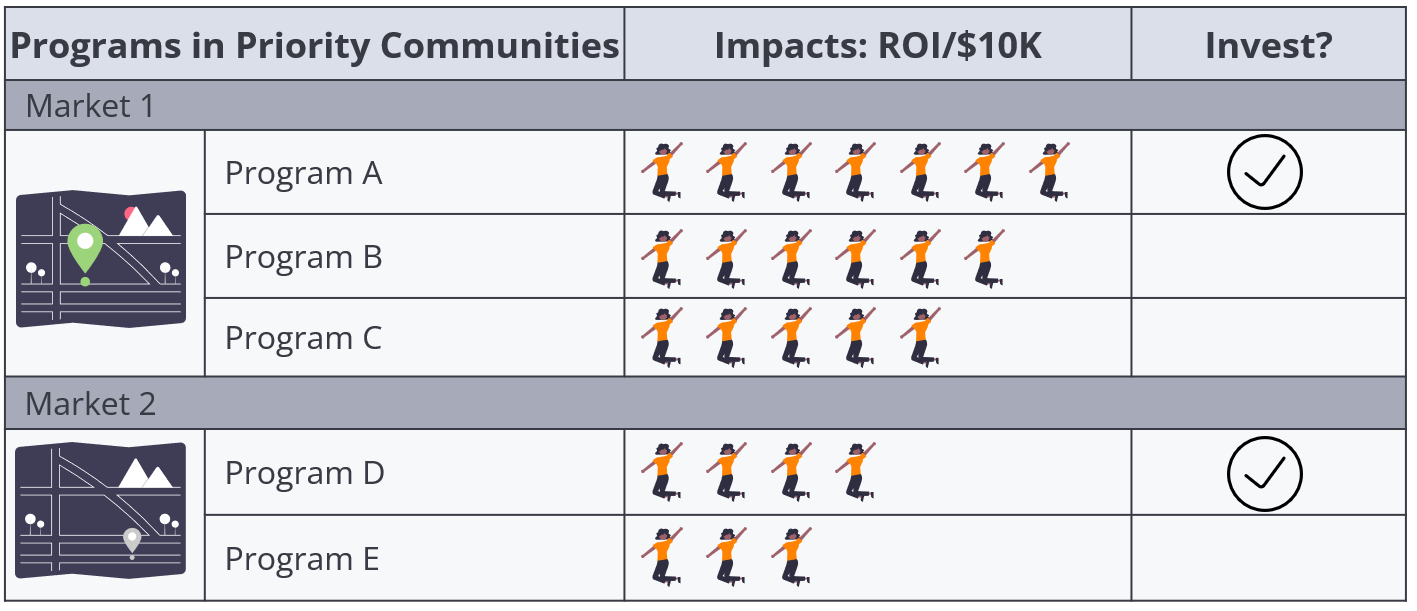The corporate social responsibility (CSR) landscape saw numerous changes during the last two years. Today, many CSR leaders wonder how to evaluate the success of these changes and their programs’ overall impact. In part 1 of this blog series, I suggested that tried-and-true methods of quantifying impact will meet these needs and discussed the first two steps of a four-step process. In this post, I present steps 3 and 4 and provide details about a recent webinar you can watch to learn more called, 4 KPIs to Jumpstart CSR Impact Reporting.
Step 3. Confirm That Your Investment Strategy Aligns with Your Goals
Look at your investment goals according to where, who, and what: the location(s), population(s), and cause area(s) you wish to serve.

One approach to evaluating how well your investments align with your goals is to calculate how much you are investing or how many successful outcomes you are achieving by focus area. If the values don’t support your priorities (for example, if you have a signature commitment to improve food security, but only a minority of donations are supporting programs in that space), then consider reallocating your investments to better reflect your priorities.

Step 4. Track Data Quality
Evaluate whether the data you receive from each nonprofit partner is based on objective data. It’s great if they have direct measures, such as from formal program evaluations or comprehensive tracking regimes. But limited resources often make that impractical. In those cases, they can use estimates based on objective data such as representative samples, previous results, or third-party studies of comparable programs.
If a partner is providing evidence-based data, you’re good to go. If the evidence is speculative, such as logical assumptions based on experience, then that’s better than nothing. But you’ll want that to be clearly acknowledged so readers can properly contextualize the information (i.e., not think it’s more precise than it is). And you’ll want to work with the partner to improve data quality. Helping nonprofits improve and sustain data quality is part of the measurement journey.
So, consider tracking data quality as a performance indicator. First, categorize your data sources, then calculate the percentage of programs using high-quality data. You can use this information not only to make investment decisions but also to identify the next steps in your relationship with individual nonprofit partners. You can also make increasing data quality over time a measure of success.
Check Out Our Webinar
4 KPIs to Jumpstart CSR Impact Reporting
YourCause and True Impact partnered together in a recent webinar to provide CSR leaders with the tools for measuring outcomes and jumpstart impact reporting. You want to prove the value of your grants, volunteerism, and other philanthropic activities to the board and other stakeholders. And you want to make investment decisions that move the needle on the causes your company and employees care about. Traditional approaches to measurement and analysis are either too demanding, too expensive, or just too... "so what?"
See how leading F500 companies are using just four KPIs to maximize their social impact while strengthening (and simplifying!) their reporting to keep key stakeholders happy.




.png)

